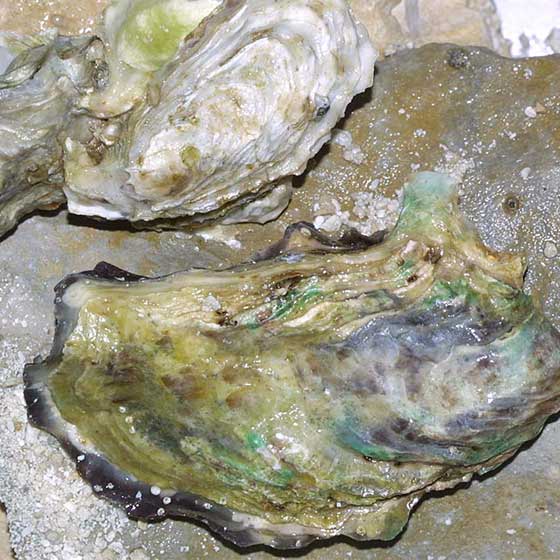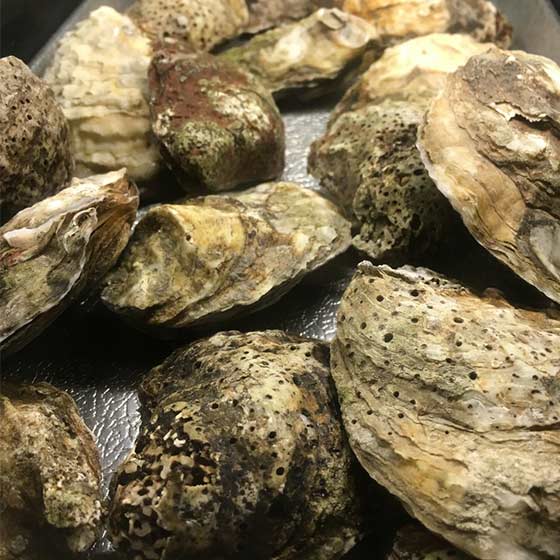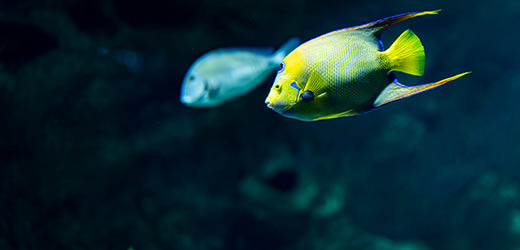Reproduction
Oysters are hermaphroditic. They are born male, but change sexes every year. Mating occurs during the summer, when the temperature of the water exceeds 20°C. The clutch of eggs weighs as much as 60% of the weight of the oyster’s body. The adults excrete reproductive cells directly into the water where fertilization then takes place. After metamorphosis, the larvae attach to different supports by secreting a liquid that solidifies when it comes in contact with water.
Oysters live in tidal zones, sometimes in slightly desalinated water. They feed on particles present in the water. For that purpose, they filter 1 to 10 litres of seawater each hour, for each gram of dry flesh. This species can grow to a maximum of 45 cm.




